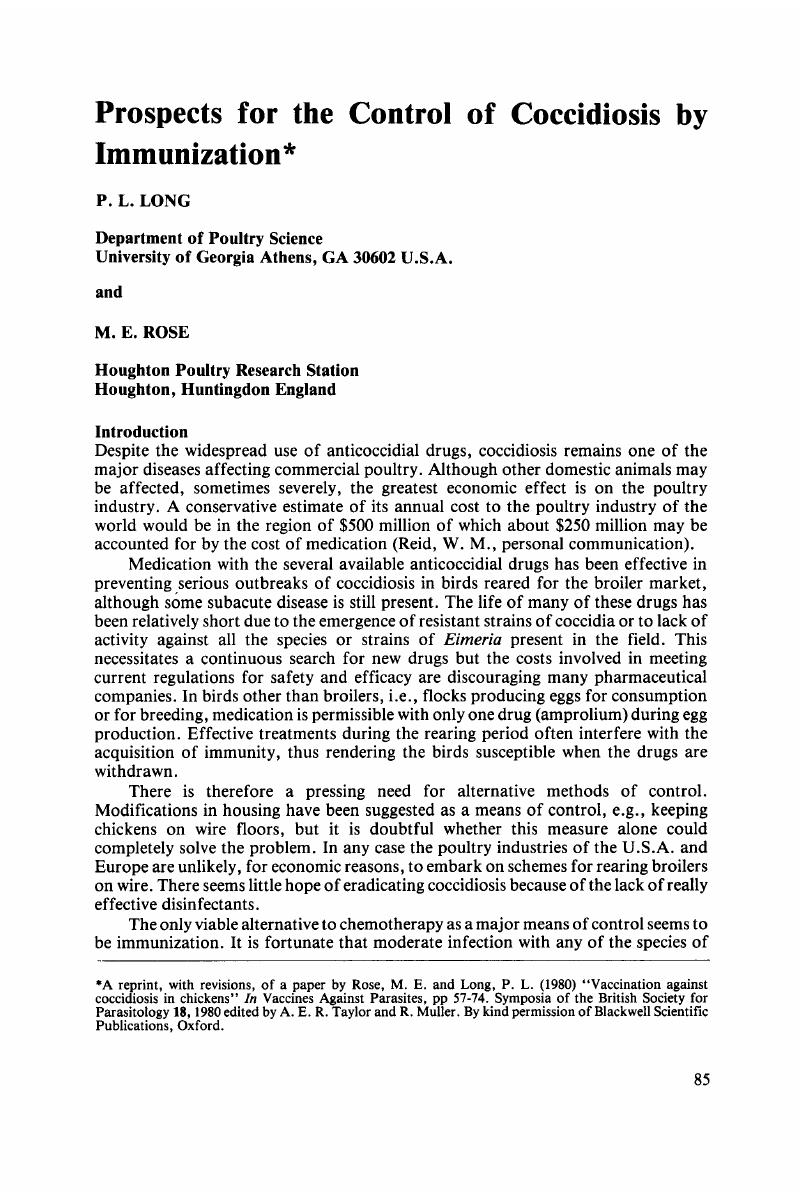Crossref Citations
This article has been cited by the following publications. This list is generated based on data provided by Crossref.
Long, P. L.
1984.
Gordon memorial lecture: Coccidiosis control: Past, present and future.
British Poultry Science,
Vol. 25,
Issue. 1,
p.
3.
Rommel, M.
1987.
Control of non-vector-borne protozoa.
International Journal for Parasitology,
Vol. 17,
Issue. 2,
p.
639.
Kim, K S
Jenkins, M C
and
Lillehoj, H S
1989.
Immunization of chickens with live Escherichia coli expressing Eimeria acervulina merozoite recombinant antigen induces partial protection against coccidiosis.
Infection and Immunity,
Vol. 57,
Issue. 8,
p.
2434.
Licois, D.
Coudert, P.
Boivin, M.
Drouet-Viard, F.
and
Prov�t, F.
1990.
Selection and characterization of a precocious line ofEimeria intestinalis, an intestinal rabbit coccidium.
Parasitology Research,
Vol. 76,
Issue. 3,
p.
192.
Licois, D.
Coudert, P.
Drouet-Viard, F.
and
Boivin, M.
1994.
Eimeria media: Selection and characterization of a precocious line.
Parasitology Research,
Vol. 80,
Issue. 1,
p.
48.
Licois, D.
Coudert, P.
Drouet-Viard, F.
and
Boivin, M.
1995.
Eimeria magna: Pathogenicity, immunogenicity and selection of a precocious line.
Veterinary Parasitology,
Vol. 60,
Issue. 1-2,
p.
27.
Surumay, Queila
Paul Thaxton, J.
and
Reagan Sadler, C.
1995.
Epidemiology of broiler diseases in Mississippi.
World's Poultry Science Journal,
Vol. 51,
Issue. 1,
p.
27.



